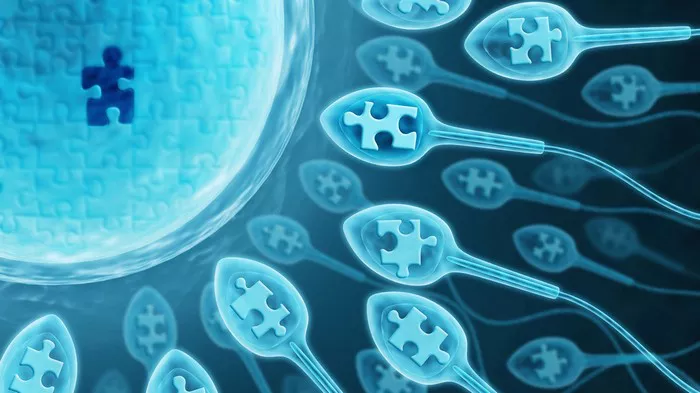Teratozoospermia, a condition characterized by abnormal sperm morphology, poses significant challenges to couples seeking to conceive. Understanding the causes and available treatments is crucial for addressing this issue effectively. In this article, we delve into the definition, causes, symptoms, diagnosis, and treatments of teratozoospermia, focusing on the needs of individuals grappling with this condition.
Definition of Teratozoospermia
Teratozoospermia, as per medical criteria such as Kruger’s strict morphology, refers to the presence of a high percentage of sperm with abnormal shapes and sizes in semen samples. Normally, a semen sample should contain at least 4% sperm with normal morphology according to World Health Organization (WHO) guidelines.
Causes of Teratozoospermia
Teratozoospermia can stem from various factors, ranging from genetic predispositions to lifestyle influences. Genetic abnormalities affecting sperm production or structure can contribute to teratozoospermia. Additionally, lifestyle factors such as hormonal imbalances, trauma to the testicles, varicoceles (swollen veins in the scrotum), infections, obesity, smoking, drug use, alcohol consumption, exposure to certain chemicals, and heavy metals can all impact sperm morphology negatively.
Symptoms of Teratozoospermia
Common symptoms associated with teratozoospermia include difficulty conceiving, erectile dysfunction, low sex drive, pelvic or urinary pain, and hormonal abnormalities. However, it’s important to note that many individuals with teratozoospermia may not exhibit any noticeable symptoms, making diagnosis through semen analysis crucial.
Diagnosis of Teratozoospermia
Diagnosing teratozoospermia involves a comprehensive evaluation of semen samples. Sperm morphology, assessed through semen analysis, plays a significant role in diagnosis. WHO reference values for human semen provide guidelines for normal sperm morphology percentages. A diagnosis of teratozoospermia is typically made when the percentage of sperm with normal morphology falls below the defined threshold.
Natural Treatments for Teratozoospermia
Natural treatment options and lifestyle changes can help improve sperm quality in individuals with teratozoospermia. Dietary adjustments, such as increasing intake of antioxidants, vitamins, and minerals, can support sperm health. Maintaining an ideal testicular temperature by avoiding prolonged heat exposure, such as hot baths or tight clothing, is also beneficial. Furthermore, reducing exposure to toxins by avoiding smoking, excessive alcohol consumption, and environmental pollutants can aid in improving sperm morphology.
Medical Treatments for Teratozoospermia
In severe cases of teratozoospermia, medical interventions and Assisted Reproductive Technology (ART) options may be necessary. Medical treatments may include hormone therapy to address hormonal imbalances, surgical correction of conditions like varicoceles, and the use of medications to treat infections or underlying health issues. Additionally, vitamin supplementation, particularly with antioxidants like vitamin C and E, may help improve sperm morphology. ART techniques such as in vitro fertilization (IVF) or intracytoplasmic sperm injection (ICSI) can be used to bypass sperm morphology issues and facilitate conception.
FAQs
Q1: Is severe teratozoospermia curable?
A1: While severe teratozoospermia may pose challenges to natural conception, medical interventions and ART techniques offer hope for many couples. Consulting with a fertility specialist can provide personalized treatment options based on individual circumstances.
Q2: Does abnormal sperm morphology increase the risk of miscarriage?
A2: Abnormal sperm morphology has been associated with an increased risk of miscarriage. However, the extent of this risk varies depending on factors such as the severity of teratozoospermia and the overall health of the female partner. Seeking medical guidance and appropriate prenatal care can help mitigate risks associated with abnormal sperm morphology.
Q3: How effective are specific dietary changes in improving sperm morphology?
A3: Dietary changes aimed at improving overall health and nutrition can positively impact sperm morphology. Consuming a balanced diet rich in antioxidants, vitamins, and minerals supports sperm production and quality. While dietary changes alone may not completely reverse severe teratozoospermia, they can complement other treatment strategies and improve overall reproductive health.
Conclusion
Teratozoospermia presents significant challenges to couples striving to conceive, but understanding its causes and treatment options can offer hope. From lifestyle modifications to medical interventions, addressing teratozoospermia requires a multifaceted approach tailored to individual needs. By consulting with healthcare professionals and exploring available treatments, couples can navigate the complexities of teratozoospermia and work towards achieving their goal of starting a family.

























